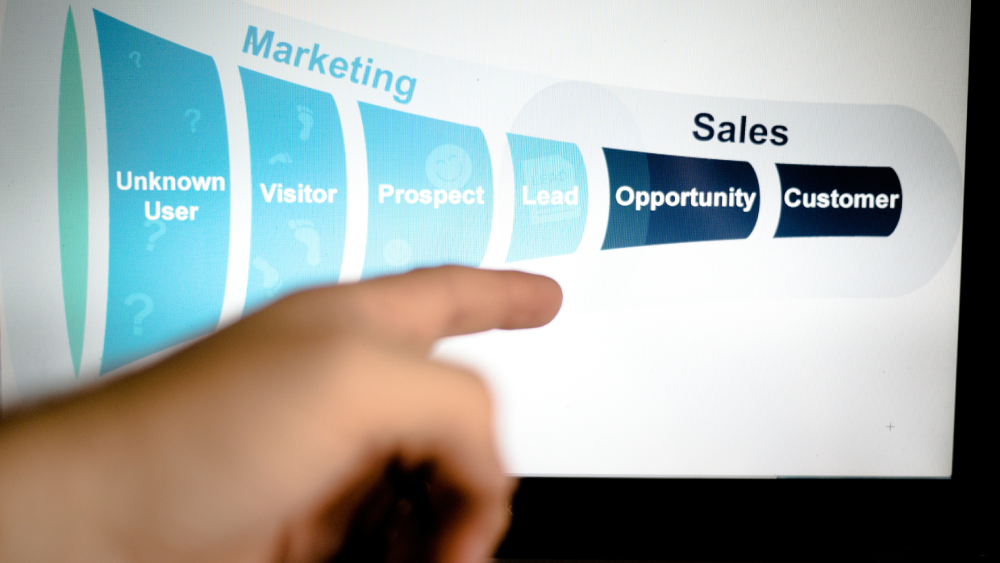
To build a successful brand from scratch requires more than just a great product or service. It demands strategic marketing efforts that effectively engage potential customers, nurture relationships, and guide them through the purchasing journey.
At the heart of these strategies lie the marketing funnels – powerful frameworks designed to attract, convert, and retain customers. Understanding and implementing these funnels effectively is crucial for transforming an unknown brand into a household name.
Understanding Marketing Funnels
Before diving into the specifics, let’s establish a clear understanding of what a marketing funnel is. Simply put, a marketing funnel is a visual representation of the journey a customer takes from being aware of a product or service to making a purchase and becoming a loyal advocate. It consists of several stages, each serving a distinct purpose in guiding prospects towards conversion.
1. Awareness Stage
The first stage of any marketing funnel is the awareness stage. Here, the goal is to attract the attention of potential customers and make them aware of your brand and what it has to offer. This is typically achieved through various channels such as social media, content marketing, SEO, and advertising. Content plays a crucial role at this stage, as it should be informative, engaging, and tailored to resonate with the target audience.
Strategies for the Awareness Funnel
● Content Marketing: Create informative and engaging content (blog posts, infographics, videos) that addresses your target audience’s pain points and establishes your brand as a thought leader.
● Social Media Marketing: Leverage the power of social media platforms to connect with your audience, share valuable content, and build brand awareness.
● Search Engine Optimization (SEO): Optimize your website and content for relevant keywords to improve organic search ranking and increase brand visibility.
● Public Relations: Secure media mentions and positive press coverage to enhance brand credibility and reach a wider audience.
Benefits for Brand Building
● Increased brand visibility: By implementing effective TOFU strategies, you introduce your brand to a broader audience, sparking initial brand recognition.
● Thought leadership positioning: Creating valuable content establishes your brand as a reliable source of information, fostering trust and credibility.
2. Consideration/Interest Stage
Once prospects are aware of your brand, they move into the consideration stage. Here, they begin to evaluate their options and weigh the benefits of choosing your product or service over competitors. Marketers can nurture leads in this stage by providing valuable content such as case studies, testimonials, product demonstrations, and comparison guides. Building trust and establishing authority are key objectives during the consideration stage.
Strategies for the Interest Funnel
● Lead Magnets: Offer valuable resources like ebooks, whitepapers, or webinars in exchange for user contact information, allowing you to nurture leads further.
● Email Marketing: Build targeted email campaigns that provide educational content, address user concerns, and showcase the value proposition of your brand.
● Remarketing: Utilize retargeting campaigns to re-engage website visitors who have shown initial interest but haven’t converted yet.
Benefits for Brand Building
● Lead generation: By providing valuable content and nurturing leads, you build stronger relationships with potential customers, increasing the likelihood of conversion.
● Brand preference: Engaging content and targeted communication help establish your brand as the preferred solution for the audience’s needs.
3. Conversion Stage
The conversion stage is where the magic happens – it’s where prospects transition into paying customers. This stage often involves direct sales tactics such as offering discounts, free trials, or limited-time promotions. However, it’s essential to ensure a seamless purchasing experience and address any concerns or objections prospects may have. Personalization and targeted messaging can significantly increase conversion rates during this critical stage.
Strategies for the Decision Funnel
● Free Trials & Demos: Offer potential customers the opportunity to experience your product or service firsthand, mitigating purchase risk and boosting confidence.
● Promotional Offers & Discounts: Incorporate strategic promotions and discounts to incentivize purchase decisions.
● Case Studies & Testimonials: Showcase successful customer stories and positive reviews to build trust and social proof.
● Clear Calls to Action (CTAs): Provide clear and compelling CTAs throughout your marketing materials to guide users towards conversion.
Benefits for Brand Building
● Increased sales and conversions: By effectively addressing customer concerns and providing a seamless purchasing experience, you drive sales and conversions.
● Customer loyalty: Building positive customer experiences through exceptional service and valuable post-purchase interactions fosters brand loyalty and repeat business.
Building a Cohesive Marketing Funnel Strategy
Each funnel stage plays a vital role in the customer journey. A successful brand-building strategy requires a cohesive approach that seamlessly integrates all three funnels.
a) The Top-of-Funnel (TOFU) Marketing Funnel
The top-of-funnel (TOFU) marketing funnel focuses on generating awareness and attracting a wide audience to the brand. It’s all about casting a wide net and capturing the attention of as many potential customers as possible. TOFU strategies often involve tactics like social media marketing, content marketing, influencer partnerships, and paid advertising.
Benefits for Brand Building
● Reach a broader audience: By targeting prospects at the awareness stage, TOFU funnels allow brands to expand their reach and attract new customers who may not have been familiar with the brand otherwise.
● Build brand visibility and authority: Consistent exposure through content and social media channels helps establish the brand as an industry authority and builds trust with prospects.
● Lay the groundwork for future conversions: While the primary focus of TOFU funnels is on awareness, they also plant the seeds for future conversions by capturing leads and nurturing relationships with prospects over time.
b) The Middle-of-Funnel (MOFU) Marketing Funnel
The middle-of-funnel (MOFU) marketing funnel is where prospects transition from being aware of the brand to actively considering its offerings. This phase is characterized by deeper engagement and relationship-building efforts aimed at nurturing leads and guiding them towards conversion.
Benefits for Brand Building
● Nurture leads and build relationships: MOFU funnels enable brands to engage with prospects on a more personal level, providing them with valuable information and resources to address their needs and concerns.
● Showcase product/service value: By highlighting the unique selling points and benefits of their offerings, brands can effectively differentiate themselves from competitors and persuade prospects to move closer to conversion.
● Increase conversion rates: By delivering targeted messaging and offers tailored to the needs and interests of prospects, MOFU funnels help increase conversion rates and drive revenue growth.
c) The Bottom-of-Funnel (BOFU) Marketing Funnel
The bottom-of-funnel (BOFU) marketing funnel is where prospects are on the verge of making a purchasing decision and need that final push to convert. This stage is all about removing barriers to conversion and incentivizing prospects to take action.
Benefits for Brand Building
● Drive conversions and revenue: BOFU funnels are laser-focused on driving conversions and maximizing revenue by presenting prospects with compelling offers and incentives to make a purchase.
● Foster customer loyalty and advocacy: By providing exceptional customer service and post-purchase support, brands can turn one-time buyers into loyal advocates who not only make repeat purchases but also recommend the brand to others.
● Gather valuable feedback and insights: BOFU funnels provide an opportunity for brands to gather feedback from customers about their experience with the product or service, allowing them to identify areas for improvement and make data-driven decisions to enhance the overall customer experience.
From Brand Awareness to Brand Advocacy
● Data-driven decision making: Utilize website analytics and customer data to understand user behavior and tailor your marketing efforts accordingly.
● Consistent brand messaging: Ensure consistent messaging across all marketing channels to reinforce brand identity and build brand recognition.
● Regular funnel optimization: Continuously monitor and analyze the performance of each funnel stage, making adjustments as needed to optimize the customer journey.
SOURCE:
